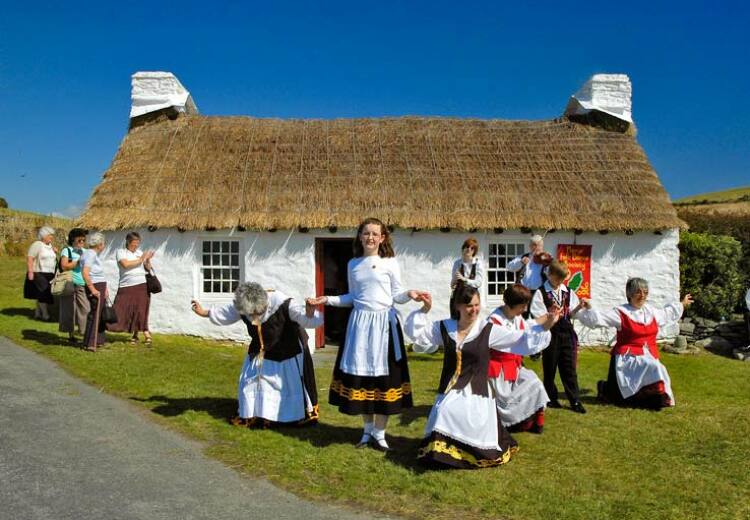In 1816, the year after Wellington’s victory at Waterloo, a set of fulling stocks were cast and a pair of heavy wooden hammers were constructed to process the homespun and handwoven tweeds and blankets being produced in the homes and cottages in the west of the Isle of Man. They were installed in Moore’s Mill, St. John’s and powered by a mill race fed from the River Neb from just below Ballig Bridge on the TT course.
In those days, 200 years ago, every town and community were installing fulling stocks to replace the exhausting task of ‘treading’, or beating, the coarse woven woollen fabric to transform them into the soft tweeds which are still loved and admired today. There was nothing unique about the machinery then. However 200 years later fulling stocks from this period are very rare and most are to be found in museums. Uniquely it is believed that the set at St. John’s Mill may be the only pair in the UK still in the original location.
This Saturday 14th May is National Mills day and to mark the occasion St. John’s Mill will be open to the public between 11.00-4.00 to provide an opportunity to visit this historic equipment, see the restored waterwheel turning and learn how the craft of hand spinning and weaving is continued on the Island today, with a demonstration by the local Guild of spinners, weavers and dyers.
http://www.nationalmillsweekend.co.uk/

Researching your Manx family history can be a very interesting and rewarding hobby. Trace your roots in the Isle of Man with our helpful of guide.







